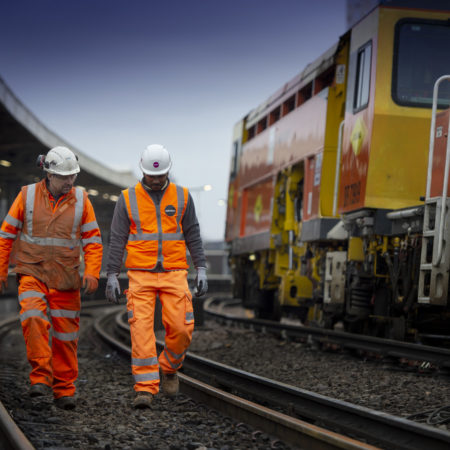A Railway that Works for All Means Learning to Work in Busy Live Environments
However great the need to improve our rail infrastructure, people still have to get to work and go about their business. The ability to carry out construction projects safely and unobtrusively without closing large areas of stations is an integral part of operating a railway that works for all passengers.
Expertise in carrying out projects in busy live environments with zero safety incidents is increasingly important. Arguably, the three priorities are planning, planning and more planning.
It all starts with understanding how assets are used and having as much detail on passenger flows and routes as possible. This information helps us identify how works can be cordoned off and passengers rerouted to cause minimum inconvenience. It also helps with planning material flows, deliveries and waste removal without safety risks.
Communication and Managing Expectations
Detailed planning allows stakeholder expectations to be managed effectively with clear information and guidance well in advance of the work starting. Most people are realistic and know that maintenance and upgrades benefit them in the long-run – they just expect to be considered and informed.
Making it a priority to keep assets open and working during maintenance, and to be fully functioning as quickly as possible afterwards, drives innovation – particularly in offsite manufacturing. Designing the project so that as much work as possible is carried out remotely is often critical.
Much current upgrade work is driven by the need to make travel more accessible so that the asset and the network truly do work for all. Retrofitting step-free access to ageing stations has the potential to be highly disruptive, which creates a major challenge for designers and contractors.
Finding Solutions
Solutions are usually there if you look hard enough. Our teams are skilled at carrying out major works with low levels of disruption and inconvenience that might not have seemed possible in the past.
One example was when Euston, London’s sixth busiest station, required a step free route from the taxi rank to the platforms. The AfA scheme was completed on time and budget with passengers moving safely and efficiently through the station. Over 1000 tonnes of clay spoil was removed in the process.
Another example was when the complete rebuild of Whitton Station with AfA facilities proved the effectiveness of offsite manufacture in delivering a complex project on time, without major inconvenience.
Developing our capabilities in working in confined live environments helps us to deliver better value to our customers and a better experience to their customers.

